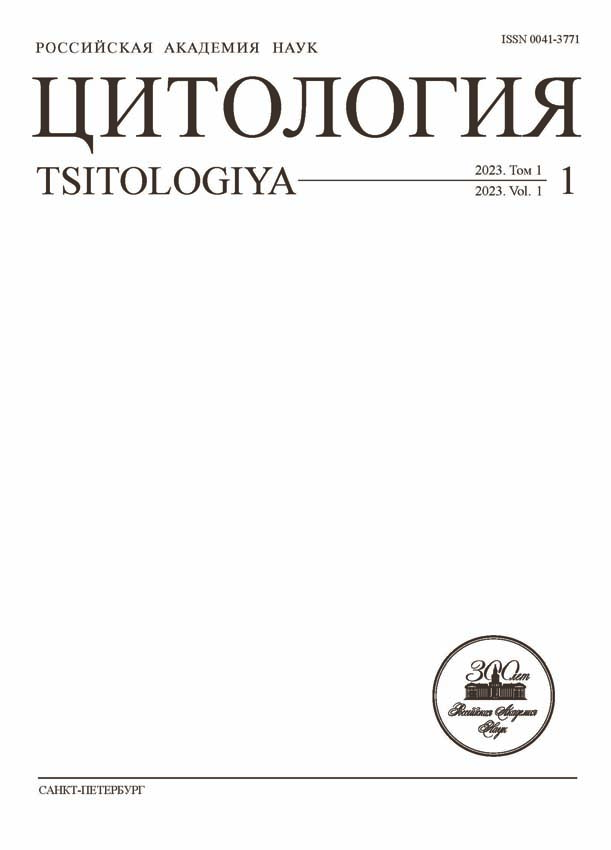Osteogenic Differentiation in vitro off Human Osteoblasts is Associated with Only Slight Shift in Their Proteomics Profile
- Autores: Khvorova I.A.1, Malashicheva A.B.1, Karelkin V.V.2, Sereda A.P.2, Bozhkova S.A.2, Tikhilov R.M.2, Gromova E.S.1, Fefilova E.A.1, Zainullina B.R.3, Kostina D.A.1, Lobov A.A.1
-
Afiliações:
- Laboratory of Regenerative Biology, Institute of Cytology of the Russian Academy of Sciences
- Vreden National Medical Research Center of Traumatology and Orthopedics
- Resource Centre for Molecular and Cell Technologies, St. Petersburg State University
- Edição: Volume 65, Nº 1 (2023)
- Páginas: 20-27
- Seção: Articles
- URL: https://cardiosomatics.ru/0041-3771/article/view/669663
- DOI: https://doi.org/10.31857/S0041377123010066
- EDN: https://elibrary.ru/GPCARC
- ID: 669663
Citar
Texto integral
Resumo
Fracture healing is a complex process in which the periosteum and endosteum become the main sources of osteoblast progenitor cells. However, cellular mechanisms and signaling cascades underlying the early stages of osteoblast progenitors differentiation in adult bone are still not well understood. Therefore, we performed shotgun proteomics analysis of primary culture of isolated human osteoblasts from femur of adult donors in undifferentiated conditions and on the sixth day of osteogenic differentiation in vitro. This is an early timepoint in which we have observed no extracellular matrix mineralization yet. 1612 proteins identified with at least two unique peptides were included in proteomics analysis. Data are available via ProteomeXchange with identifier PXD033697. Despite the fact, that matrix mineralization starts only after induction of osteogenic differentiation, we revealed unexpectedly weak physiological shift associated with a decrease of cells proliferative activity and changes in proteins inVved in extracellular matrix secretion and organization. We demonstrated that osteoblasts were positive for markers of later osteogenic differentiation stages during standard cultivation: osteopontin, osteocalcin, BMP-2/4 and RUNX2. Therefore, further differentiation required for matrix mineralization needs minimal physiological changes.
Palavras-chave
Sobre autores
I. Khvorova
Laboratory of Regenerative Biology, Institute of Cytology of the Russian Academy of Sciences
Email: lobov@incras.ru
Russia, 194064, St. Petersburg
A. Malashicheva
Laboratory of Regenerative Biology, Institute of Cytology of the Russian Academy of Sciences
Email: lobov@incras.ru
Russia, 194064, St. Petersburg
V. Karelkin
Vreden National Medical Research Center of Traumatology and Orthopedics
Email: lobov@incras.ru
Russia, 195427, St. Petersbur
A. Sereda
Vreden National Medical Research Center of Traumatology and Orthopedics
Email: lobov@incras.ru
Russia, 195427, St. Petersbur
S. Bozhkova
Vreden National Medical Research Center of Traumatology and Orthopedics
Email: lobov@incras.ru
Russia, 195427, St. Petersbur
R. Tikhilov
Vreden National Medical Research Center of Traumatology and Orthopedics
Email: lobov@incras.ru
Russia, 195427, St. Petersbur
E. Gromova
Laboratory of Regenerative Biology, Institute of Cytology of the Russian Academy of Sciences
Email: lobov@incras.ru
Russia, 194064, St. Petersburg
E. Fefilova
Laboratory of Regenerative Biology, Institute of Cytology of the Russian Academy of Sciences
Email: lobov@incras.ru
Russia, 194064, St. Petersburg
B. Zainullina
Resource Centre for Molecular and Cell Technologies, St. Petersburg State University
Email: lobov@incras.ru
Russia, 199034, St. Petersburg
D. Kostina
Laboratory of Regenerative Biology, Institute of Cytology of the Russian Academy of Sciences
Email: lobov@incras.ru
Russia, 194064, St. Petersburg
A. Lobov
Laboratory of Regenerative Biology, Institute of Cytology of the Russian Academy of Sciences
Autor responsável pela correspondência
Email: lobov@incras.ru
Russia, 194064, St. Petersburg
Bibliografia
- Bahney C., Zondervan R., Allison P., Theologis A., Ashley J., Ahn J., Miclau T., Marcucio R., Hankenson K. 2019. Cellular biology of fracture healing. J. Orthop. Res. V. 37. P. 35. https://doi.org/10.1002/jor.24170
- Blighe K., Sharmila R., Myles L. 2022. EnhancedVcano: publication-ready Vcano plots with enhanced colouring and labeling. https://bioconductor.org/packages/devel/bioc/vignettes/EnhancedVcano/inst/doc/EnhancedVcano.html
- Bragdon B., Bahney C. 2018. Origin of reparative stem cells in fracture healing, Curr. Osteoporos. Rep. V. 16. P. 490. https://doi.org/10.1007/s11914-018-0458-4
- Cleland T., Vashishth D. 2015. Bone protein extraction without demineralization utilizing principles from hydroxyapatite chromatography. Anal. Biochem. V. 472. P. 62. https://doi.org/10.1016/j.ab.2014.12.006
- Cleland T., Voegele K., Schweitzer M. 2012. Empirical evaluation of bone extraction protocols. PLoS One. V. 7. P. e31443. https://doi.org/10.1371/journal.pone.0031443
- Florencio-Silva R., Sasso G., Sasso-Cerri E., Simões M., Cerri P. 2015. Biology of bone tissue: structure, function, and factors that influence bone cells. Biomed. Res. Int. V. 2015. P. e421746. https://doi.org/10.1155/2015/421746
- Hastie T., Tibshirani R., Narasimhan B., Chu G. 2022. Impute: imputation for microarray data. Bioconductor version: Release (3.14). https://www.bioconductor.org/packages/release/bioc/html/impute.html
- Jiang X., Ye M., Jiang X., Liu G., Feng S., Cui L., Zou H. 2007. Method development of efficient protein extraction in bone tissue for proteome analysis. J. Proteome Res. V. 6. P. 2287. https://doi.org/10.1021/pr070056t
- Lobov A., Malashicheva A. 2022. Osteogenic differentiation: a universal cell program of heterogeneous mesenchymal cells or a similar extracellular matrix mineralizing phenotype? Bio. Comm. V. 67. P. 32. https://doi.org/10.21638/spbu03.2022.104
- Matthews B., Novak S., Sbrana F., Funnell J., Cao Y., Buckels E., Grcevic D., Kalajzic I. 2021. Heterogeneity of murine periosteum progenitors inVved in fracture healing. Elife. V. 10. P. e58534. https://doi.org/10.7554/eLife.58534
- Perez-Riverol Y., Bai J.; Bandla C., García-Seisdedos D., Hewapathirana S., Kamatchinathan S., Kundu D.J., Prakash A., Frericks-Zipper A., Eisenacher M., Walzer M., Wang S., Brazma A., Vizcaíno J.A. 2022. The PRIDE database resources in 2022: A hub for mass spectrometry-based proteomics evidences. Nucleic Acids Res. V. 50. D543–D552. https://doi.org/10.1093/nar/gkab1038
- Pitkänen S. 2020. In vitro and in vivo osteogenesis and vasculogenesis in synthetic bone grafts. Doctoral dissertation: Tampere University.
- Raouf A., Ganss B., McMahon C., Vary C., Roughley P., Seth A. 2002. Lumican is a major proteoglycan component of the bone matrix. Matrix Biol. V. 21. P 361. https://doi.org/10.1016/s0945-053x(02)00027-6
- Ritchie M.E., Phipson B., Wu D., Hu Y., Law C.W., Shi W., Smyth G.K. 2015. Limma powers differential expression analyses for RNA-sequencing and microarray studies. Nucleic Acids Res. V. 43. P. e47. https://doi.org/10.1093/nar/gkv007
- Rohart F., Gautier B., Singh A., Cao K. 2017. mixOmics: an R package for ‘omics’ feature selection and multiple data integration. PLoS Comput. Biol. V. 13. P. e1005752. https://doi.org/10.1371/journal.pcbi.1005752
- Rutkovskiy A., Stensløkken K., Vaage I. 2016. Osteoblast differentiation at a glance. Med. Sci. Monit. Basic Res. V. 22. P. 95. https://doi.org/10.12659/MSMBR.901142
- Wickham H. 2016. ggplot2. Cham: Springer Int. Publishing.
- Yan L. 2021. ggvenn: Draw Venn Diagram by “ggplot2”. https://cran.r-project.org/web/packages/ggvenn/
Arquivos suplementares












